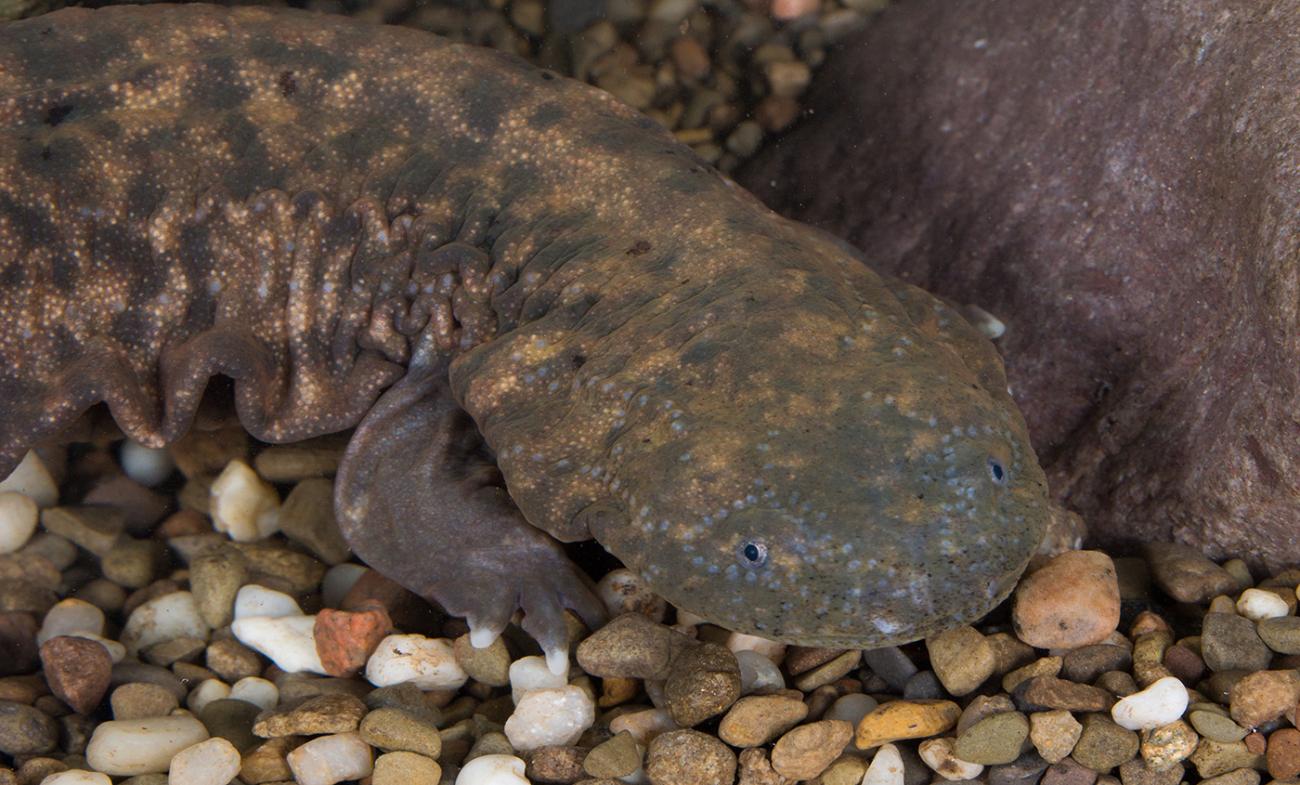Detecting Rare Salamanders Using Environmental DNA
How do you find an elusive salamander that lives under enormous rocks at the bottom of cold, rushing streams?
The scientists at the Smithsonian Conservation Biology Institute’s Center for Species Survival (CSS) are using environmental DNA, or eDNA, to track down the hellbender, a prehistoric-looking salamander that can grow to be more than 2-feet long. Hellbenders require clean, healthy Appalachian streams but their populations are mysteriously declining in many parts of their range and we need to find efficient ways to monitor them.
With the help of more than 30 citizen scientists throughout Virginia, CSS scientists spend hours filtering gallons of stream water looking for DNA left behind by hellbenders—a kind of forensic science for wildlife conservation. In the first year of the project, the team discovered five new hellbender populations!
Continued surveillance and monitoring is needed to better understand the causes of the observed declines, and this new tool has the potential to reduce the habitat disturbance associated with physical surveillance methods.
Partners and Collaborators
- Virginia Department of Game and Inland Fisheries
- Virginia Master Naturalists
- University of Virginia – Wise
- Radford University
- Southwest Virginia Community College
- Cornerstone Christian Academy
Support
This work is supported by the Virginia Department of Game and Inland Fisheries, the Northeast Association of Fish and Wildlife Agencies, and the Memphis Zoo.













